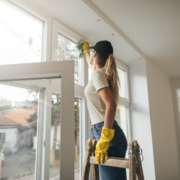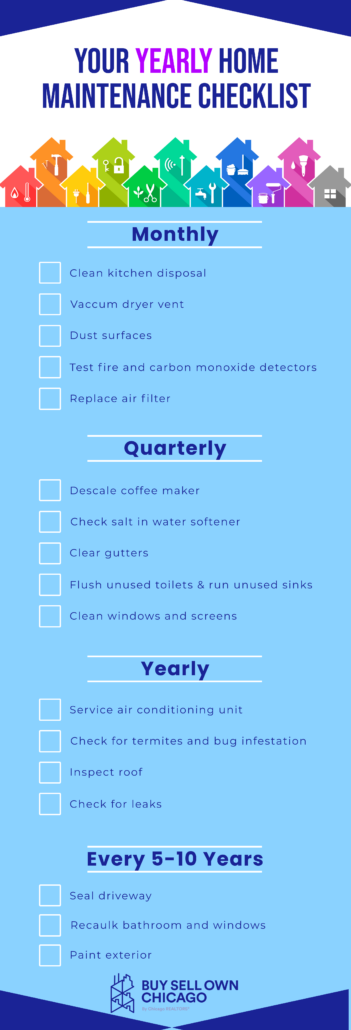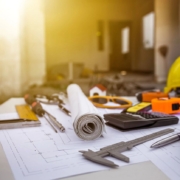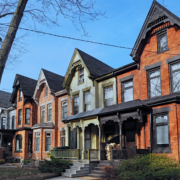The Ultimate Winter Maintenance To-Do List
As cold weather creeps in, it’s time to start looking at your winter maintenance to-do list. Use this list to start checking off your tasks to prepare for everything that comes with the wintry season.
Check for Drafts
Before Chicago temperatures drop consistently into the single and negative digits, save on your energy costs by addressing drafty entry points. You can save up to 20% each year, according to the U.S. Energy Department. Look for cracks in window caulking or doorway weatherstripping, which are two common causes of drafts.
Inspect Your Roof
Before the first snowfall, check for leaks in your roof! If you don’t know what to look for, a professional roof inspection can determine if there are any issues.
If you want to look for yourself, check for cracks or rust on flashing, warped shingles or build up of moss or lichen (which could mean decay below).
Clean Your Gutters
Clear debris from your gutters to avoid clogs which can lead to dangerous and damaging ice dams. Clogged gutters can cause expensive water damage! Follow these tips to clean your gutters.
Trim Tree Branches
Heavy snow can weigh down branches and even cause them to break off, and you don’t want them hitting and damaging your house! Make sure any limbs or branches around the outside of your home are at least three feet away.
Prep Your Pipes
Water expands when frozen, and if that water is in your pipes, it can cause them to burst. Avoid this by insulating pipes that run through unheated spaces like garages, crawl spaces, et cetera.
If the weather is expected to be particularly cold, consider setting your faucets to drip, which ensures water continues to move through the pipes and doesn’t grow stationary enough to freeze.
Check Smoke and Carbon Monoxide Detectors
Get in the habit of checking your smoke and carbon monoxide detectors once a season to see if their batteries need to be replaced. These are important safety guards!
In the end, winter maintenance doesn’t have to be intimidating! With planning and foresight, your home will be ready for whatever winter brings.









